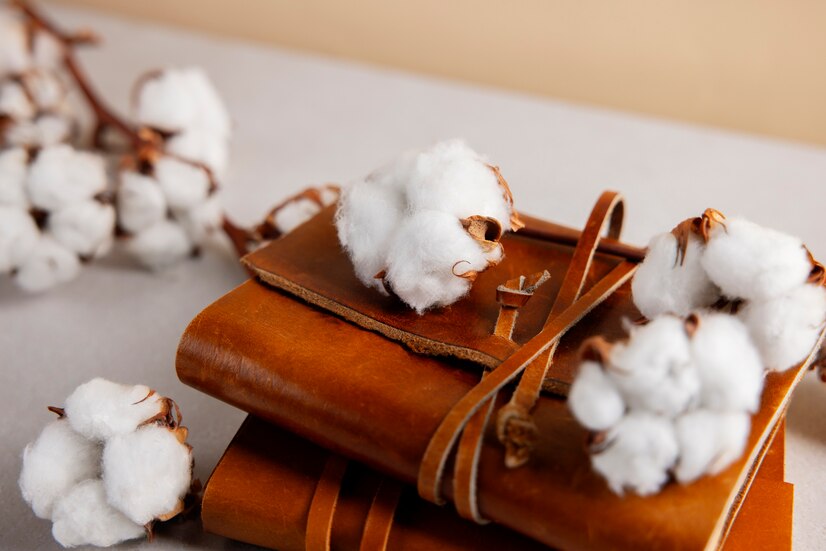Welcome to the captivating journey of raw cotton’s transformation into fabric! In this comprehensive guide, we’ll delve into the intricate process step by step, shedding light on every aspect of how raw cotton evolves into the versatile fabric we adore. From its humble beginnings in the fields to the bustling textile mills, join us as we uncover the magic behind this remarkable metamorphosis.
Unveiling the Raw Material: Raw Cotton
From Cotton Fields to Bales
Let’s start at the source: the cotton fields. Here, under the sun’s warm embrace, cotton plants flourish, bearing fluffy bolls bursting with promise.After harvesting, the cotton is ginned to remove the seeds, leaving behind the soft, fibrous strands known as raw cotton.
Sorting and Cleaning
Before the real transformation begins, raw cotton undergoes meticulous sorting and cleaning processes. Impurities like dirt, leaves, and seeds are meticulously removed to ensure the purity and quality of the fibers. This initial preparation sets the stage for the subsequent stages of processing.
Spinning the Magic: Cotton Yarn Production
Aligning the Fibers
The journey from raw cotton to fabric kicks off with carding, a crucial step where the tangled fibers are straightened and aligned. This process ensures uniformity and strength in the resulting yarn, laying the foundation for high-quality fabric.
From Fibers to Yarn
Next comes spinning, where the carded fibers are twisted together to form yarn. This twisting action imparts strength and cohesion to the yarn, transforming loose fibers into a versatile textile building block ready for weaving or knitting.
Weaving Wonders: Fabric Formation
The Loom’s Dance
In the weaving process, yarns are intertwined to create fabric. The warp yarns run lengthwise, while the weft yarns traverse horizontally, intertwining to form the fabric’s structure. This intricate dance of yarns on the loom gives birth to a vast array of fabric types, each with its unique characteristics.
Fabric Finishes
Once the fabric emerges from the loom, it undergoes various finishing treatments to enhance its properties. Processes like dyeing, printing, and chemical treatments imbue the fabric with color, texture, and functionality, catering to diverse preferences and applications.
Crafting Quality: Quality Control Measures
Inspection and Testing
Quality control is paramount in the textile industry. Fabrics undergo rigorous inspection and testing at various stages to uphold stringent quality standards. From visual checks to mechanical tests, every aspect is scrutinized to deliver fabrics that meet or exceed customer expectations.
Compliance and Sustainability
In today’s conscientious world, ethical sourcing and sustainable practices are non-negotiable. Textile manufacturers adhere to stringent compliance standards and embrace eco-friendly initiatives to minimize environmental impact and promote social responsibility.
Embracing Innovation: Technological Advancements
Automation and Robotics
The textile industry embraces cutting-edge technologies like automation and robotics to optimize efficiency and productivity. From automated looms to robotic fabric handling, innovation drives progress, paving the way for a future where textiles are produced faster, smarter, and more sustainably.
Smart Fabrics
The advent of smart fabrics heralds a new era in textile innovation. From moisture-wicking sportswear to temperature-regulating bedding, these advanced textiles seamlessly integrate technology. Consequently, they enhance comfort, performance, and functionality in ways previously unimaginable.
Conclusion
The journey from raw cotton to fabric is a testament to human ingenuity, innovation, and craftsmanship. Through centuries of evolution, textile production has undergone remarkable advancements, yet the essence remains unchanged: the transformation of humble fibers into functional, beautiful fabrics that enrich our lives in myriad ways. As we embrace sustainability, technology, and creativity, the future of textiles holds endless possibilities, promising a world where raw cotton continues to weave its magic into the fabric of our existence.
FAQs
What is the significance of ginning in cotton processing?
Ginning plays a crucial role in cotton processing by separating the seeds from the fibers, ensuring purity and quality in the raw material.
How do weaving and knitting differ in fabric production?
Weaving involves the interlacing of yarns on a loom to create fabric, while knitting utilizes interconnected loops of yarn to form fabric, resulting in distinct textures and properties.
Why is quality control important in the textile industry?
Quality control ensures that fabrics meet stringent standards for durability, appearance, and performance, safeguarding customer satisfaction and brand reputation.
What are some sustainable practices in textile manufacturing?
Sustainable textile manufacturing involves practices such as using organic and recycled fibers, minimizing water and energy consumption, and implementing eco-friendly dyeing and finishing processes.
How are smart fabrics revolutionizing the textile industry?
Smart fabrics integrate technology to offer enhanced functionalities such as temperature regulation, moisture management, and biometric sensing. As a result, they open up new possibilities for performance apparel, healthcare, and beyond.
What role do consumer preferences play in textile innovation?
Consumer preferences drive textile innovation by shaping demand for specific features like comfort, durability, sustainability, and aesthetics, prompting manufacturers to continually adapt and evolve their offerings.







